Tecpearl
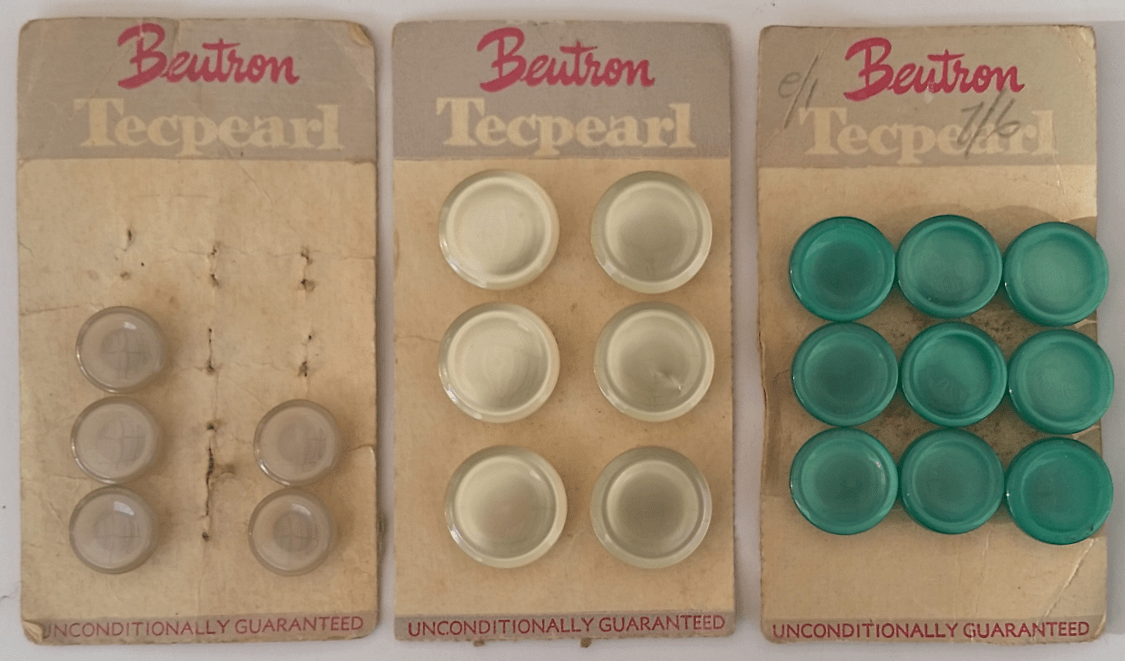
Iridescent and beautiful, ocean pearl shells have been collected and traded for millennia. From the 18th century in Europe and Britain, wonderful buttons were made from pearl shell. As harvesting increased in scale sufficiently for prices to allow, plainer shirt and dress buttons, from both ocean and freshwater shells, were made by the million. Australian housewives in 1928 could buy cards holding a gross (144) of pearl shirt buttons from Woolworths for 7½ pennies, such was their everyday use. They probably never imagined that there would come a time when they didn’t have to replace pearl buttons that had broken in the wash.
By the 1950s the pearl shell industry was in decline; in fact it had never really recovered after WW2. Imitation pearl buttons introduced in the 1950s, such as G. Herring’s ‘Tecpearl’, were much more robust but still with a nice iridescent quality. The role of pearl shell would return to a “high fashion accessory”, as it had been in earlier times!
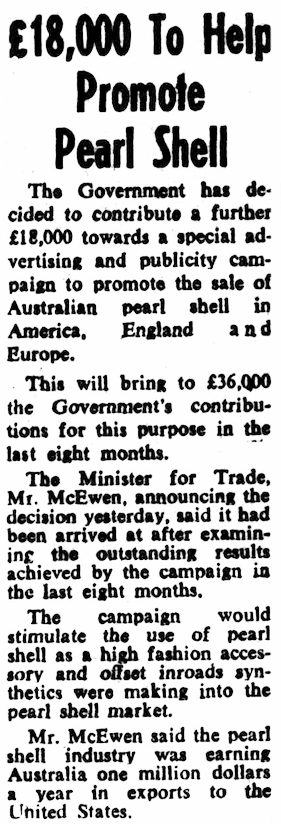
The Canberra Times, 10th June 1959 page 5. Only top quality shell was being sold.
A newspaper report in 1965 explained that increasing demand for live shell to supply “pearl culture stations” was stablising the industry that had been in decline in “recent years”. In this way, pearling towns such as Broome were able to re-invent themselves.
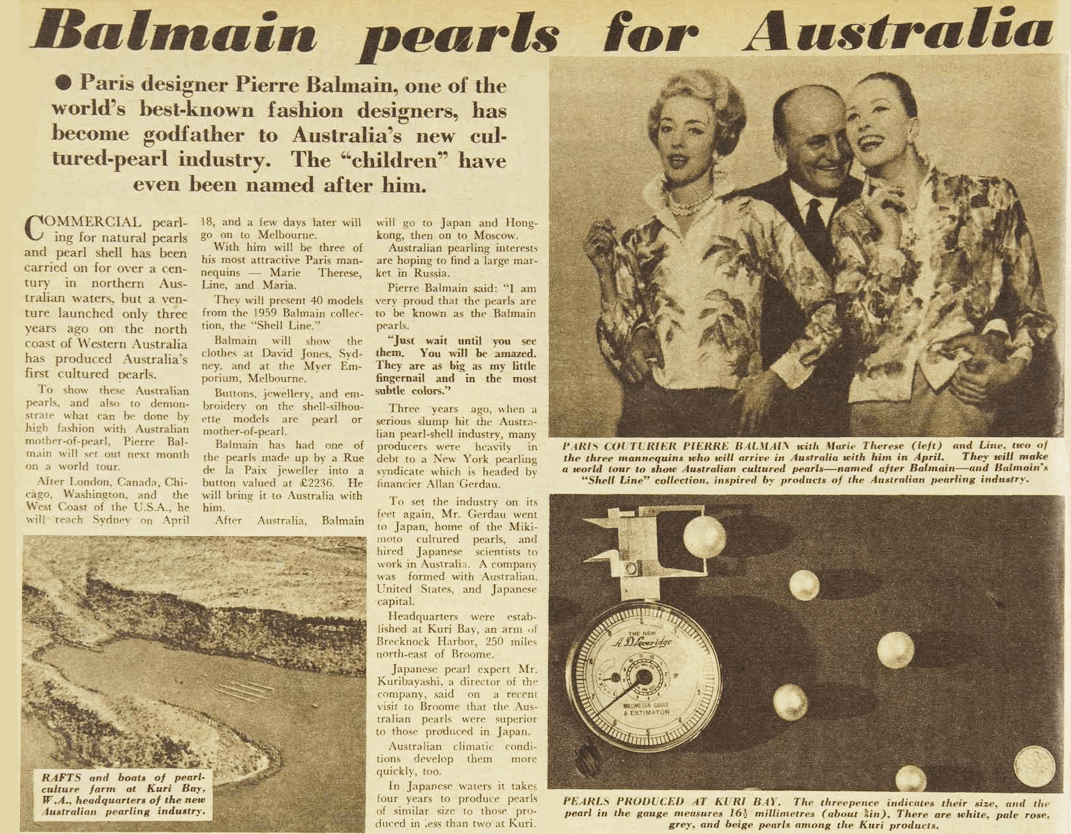
The Australian Women’s Weekly, 11th February 1959 page 10.
http://www.austbuttonhistory.com/australian-button-history/pearl-shell-button-industry/
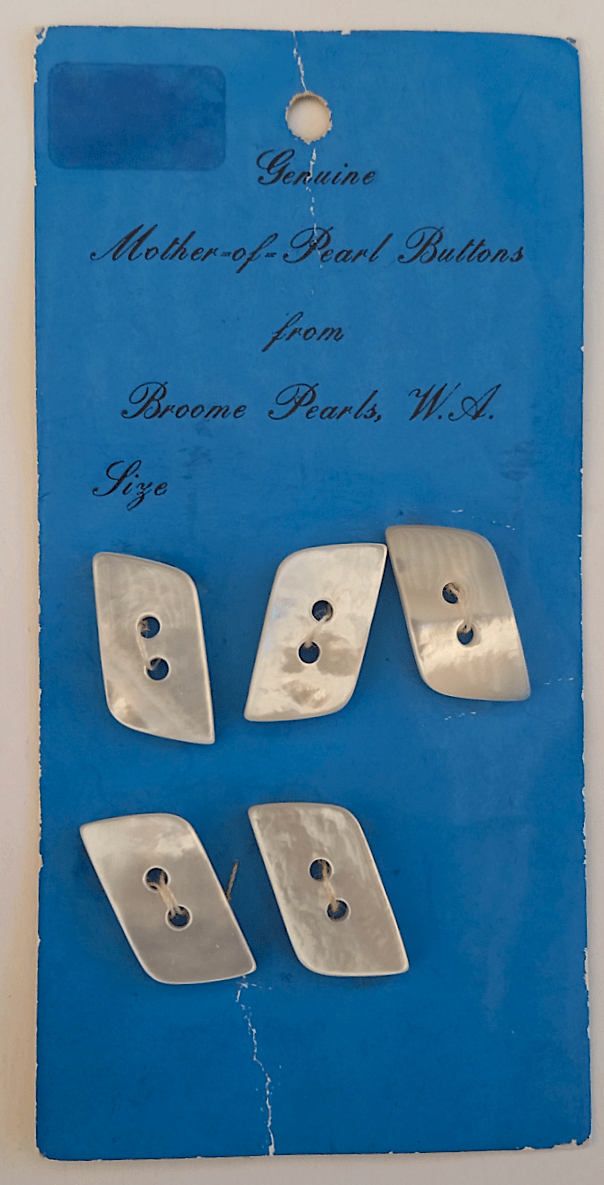
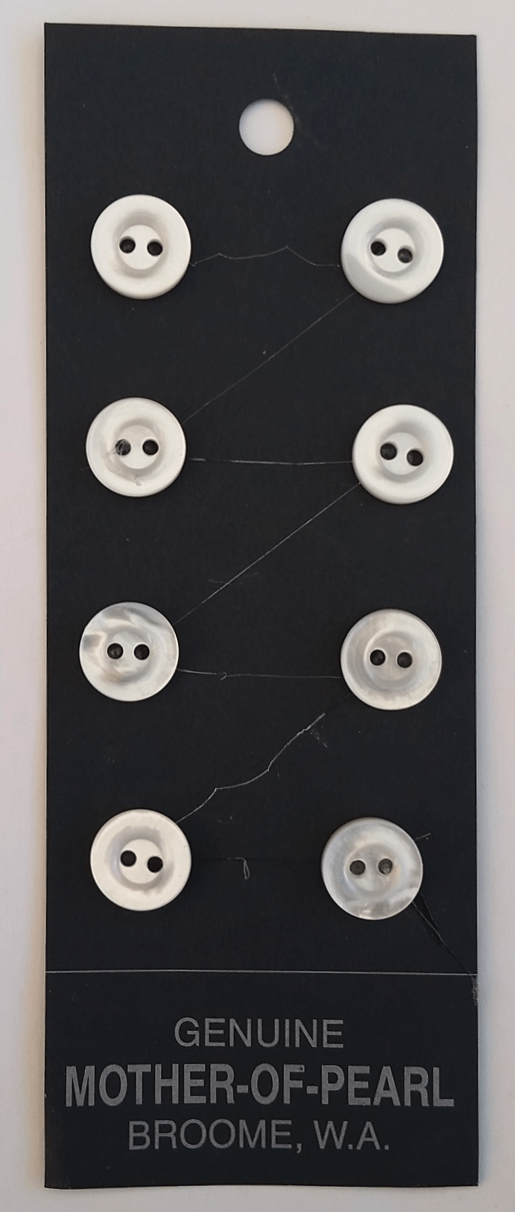
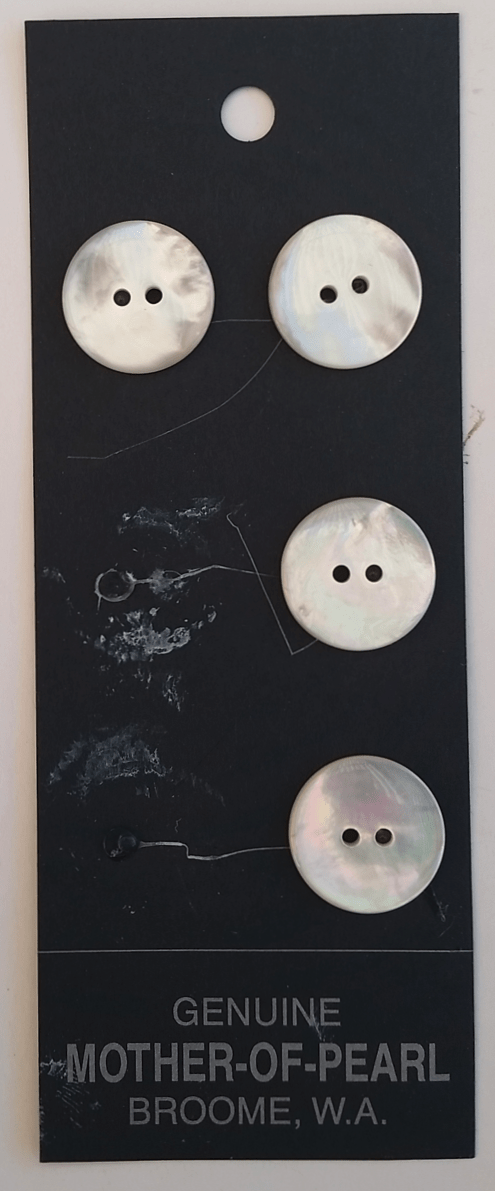
For any comment or question, please use the Contact page.
